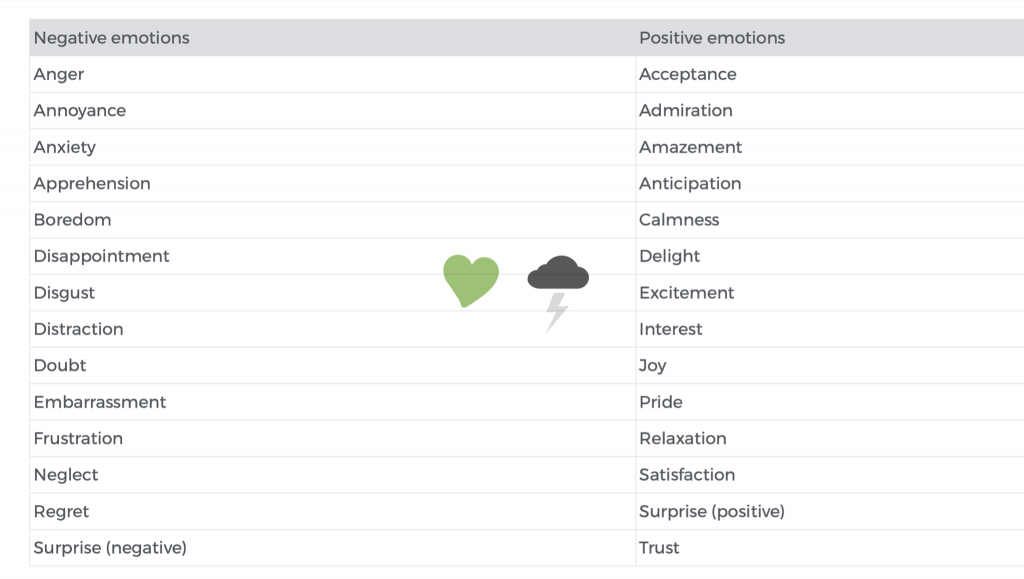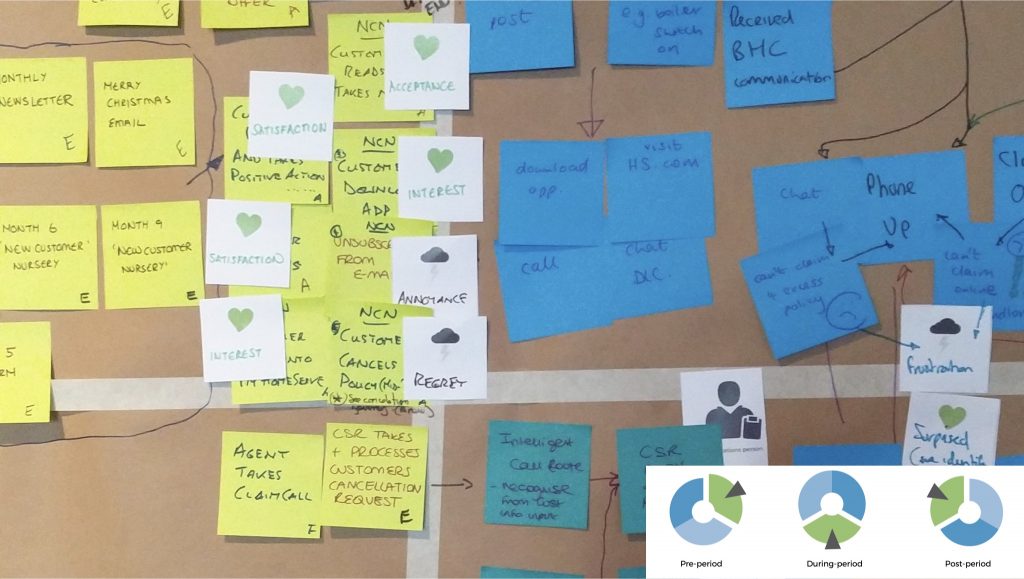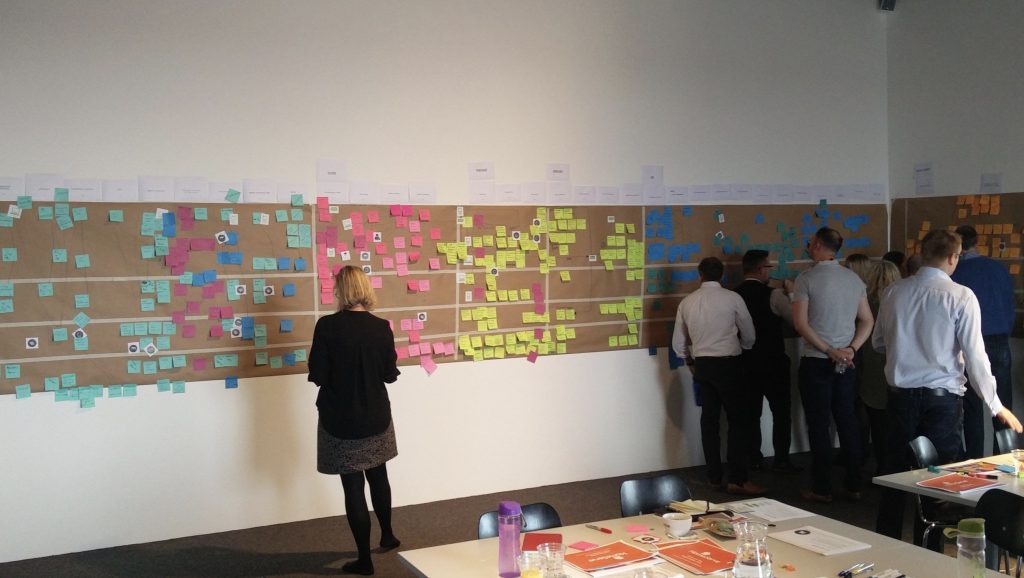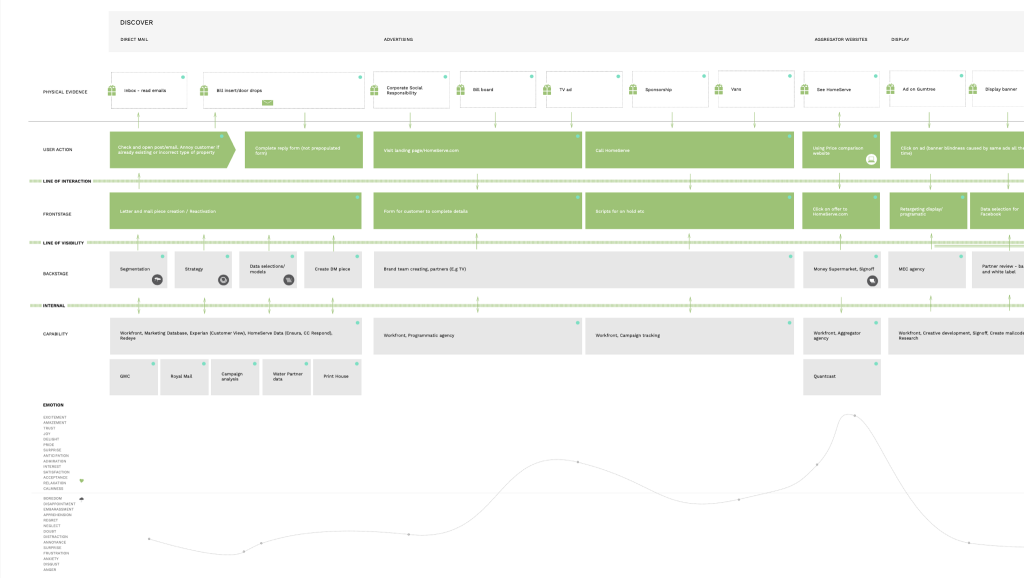
Is our customer journey fit for purpose?
Methodology
For all organisations, no one has a total understanding of the customer journey due to the nature of departments. Moments in the journey (or lacking moments) cause challenges for the customer. It can result in an abandoned sale, negative review or switch to a competitor. Whatever way you look at it, it’s bad for the organisation,
Being able to stand back to see the complete journey and to cut through the slice of time enables the organisation to see where the breakages are and their impact of them. Only then, can a plan be formulated to move forward.
In customer experience, simplistic measures such as Net Promotor Score are used to measure satisfaction. But these measures are largely meaningless as they don’t enable pinpointing problems (and successes).
Let us look at the process in more detail:
- Create a list of missions derived from persona needs
- Document what the customer is thinking, feeling and doing at every stage
- Document how the organisation fulfils that evidence and action response where the customer can have an interaction (the frontstage)
- Document how the organisation has a process/method to enable the frontstage (the backstage)
- Document the capabilities that enable the backstage
- Note all error handling, edge cases, manual processes and flows
Outcome
Creating a detailed customer journey map is a focused activity. To create long-lasting value to enable change, it needs to have every ounce of detail. Without it, it will be presented on a slide, once, and forgotten about.
The most valuable outcome from mapping is focusing on broken connections and moments of negativity. These are often straightforward projects to resolve.
Measurement should focus on the two types of customer:
Prospect –
- Increase in sales
- Drop in abandonment
Existing customer –
- Repurchase
- Recommendation
- Reduction in customer service enquires
It could be to state the obvious, but the map will reveal just how large and complex the customer experience is and how all parts play their role. Management can have a greater appreciation why certain initiatives are potentially more complex than initially envisaged.
Timeline: 6 weeks
- 1 week – review the customer needs to create missions. Identify a range of resources from across the entire business to take part in the exercise
- 1 week – series of intensive workshop sessions to capture all events, ensuring playback enables all participants to build upon scenarios
- 2 weeks – document as digital map
- 1 week – playback looking at moments for change





Understand cause and effect
Get a birds-eye view of how features and processes generate quality and problematic moments for your customers
Evaluation & Benchmarking
Could our platform conversion improve?
Do you know how mature features are across your entire platform? Are you interested in where improvements need to be made to increase conversion – be that subscription, returning customers or sales
How do we compare to the competition?
Do you regularly review your competitors to play catchup? Does it feel like you’re always one step behind them in launching new features?
Is our customer journey fit for purpose?
Are you concerned areas in your customer journey aren’t up to scratch or generate poor experiences and costs for the organisation?